What did trips to the moon look like before we actually got there?
From bird-pulled contraptions to hot-air balloons, a look at the pseudoscience and wild imagination that populated lunar sci-fi until the mid-19th century.
“Of all the creatures who had yet walked on Earth, man-apes were the first to look steadfastly at the Moon,” writes Arthur C Clarke, in the initial pages of 2001: A Space Odyssey, published a year before Neil Armstrong set foot on the moon.
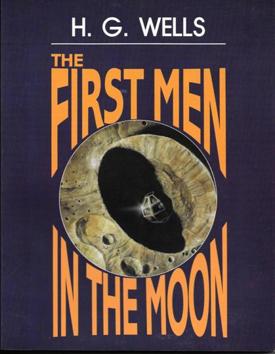
With this image, Clarke captures the human fascination with the moon. In early science-fiction, moon voyages were taken on birds and hot-air balloons. A mixture of pseudoscience and wild imagination populated space operas till the mid-1900s. A look at science fiction from the 1600s until our actual voyage to the moon.
Somnium (The Dream), 1608 (published in 1639)
Johannes Kepler

The story takes place in a dream. A boy and his mother are transported to an island called Levania. The journey is dangerous, so they are sedated for the trip. With its detailed description of Earth as viewed from the moon, Somnium is often considered the earliest work of science fiction. There is talk of the near side and the far side, as well as fantastical creatures and plants that grow there.
The Man in the Moone, 1638
Francis Godwin
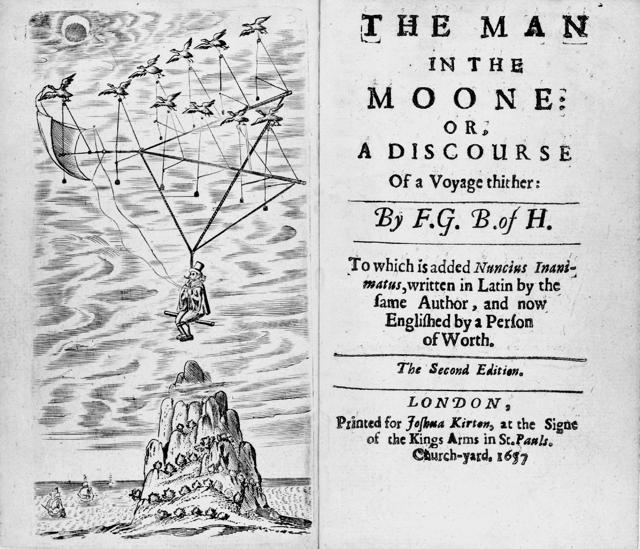
Domingo Gonsales is on the run for killing a man in a duel. He flees to the moon on a contraption pulled by giant swans. He lands 12 days later and discovers the Lunars, extra-terrestrial Christians (Francis Godwin was, incidentally, a bishop of the Church of England) living happy, carefree lives in Utopian harmony. This work showed acceptance of new ideas of cosmology at the time, including the works of Copernicus, Kepler and Galileo, who was famously deemed a heretic and excommunicated by the church.
The Other World: The Comical History of the States and Empires of the Moon, 1657
Cyrano de Bergerac
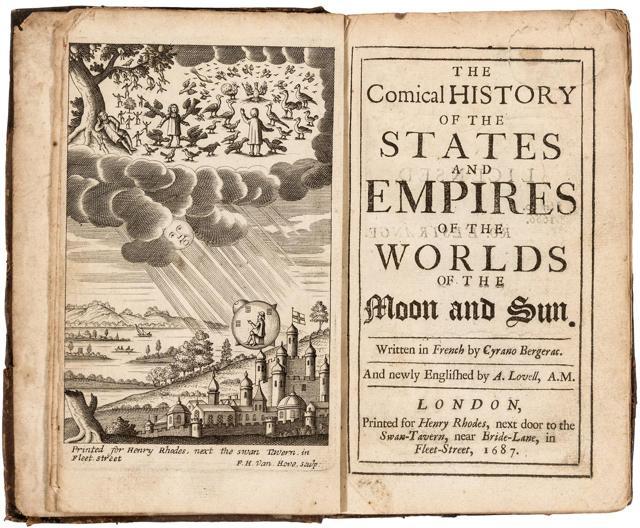
This satirical work of sci-fi is about moon people who see the earth as their moon. One man decides to visit them, using a machine that curiously resembles the rocket-powered spacecraft of centuries later. On the moon, he meets four-legged inhabitants with musical voices and fantastical weapons. He also meets the ghost of Socrates, with whom he discusses the futility of God as a concept and pokes fun at society and politics.
The Unparalleled Adventure of One Hans Pfaall, 1835
Edgar Allan Poe
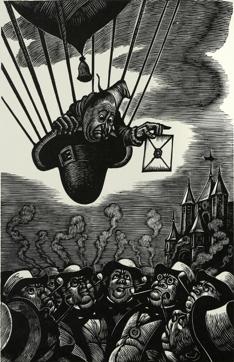
Hans Pfaall, a man on the run, flies to the moon in a hot-air balloon and lives for years amid lunar people, eventually sending one of them to earth with a message. He promises to return with wondrous tales if he’s granted full pardon for his crimes. The short story, as narrated by Hans Pfaall in a letter, was published in the Southern Literary Messenger, a monthly magazine.
From the Earth to the Moon, 1865
by Jules Verne
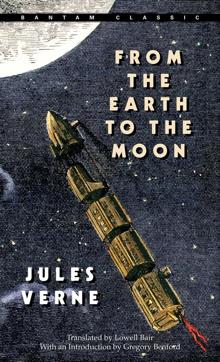
In the lull after the American Civil War, the members of the Baltimore Gun Club build a cannon so big that it can launch a vehicle to the moon. A wager here, a duel there, and the project is turned into a manned mission that orbits the moon and never lands, but encounters a series of misadventures before returning home.
The First Men in the Moon, 1901
by HG Wells
A businessman and a scientist travel to the moon on a spherical craft made from a metal with anti-gravitational properties. They explore the lunar jungles and discover an abundance of lunar gold. In the moon’s underground caverns, they come in contact with lunar natives (Selenites, after the Greek moon goddess), a civilisation of 5-ft-tall insectoid aliens. The men are captured and will have to make a bloody escape, but they don’t know where they are or where their craft is.
The Adventures of Tintin: Destination Moon, 1950, and Explorers on the Moon, 1950
by Hergé
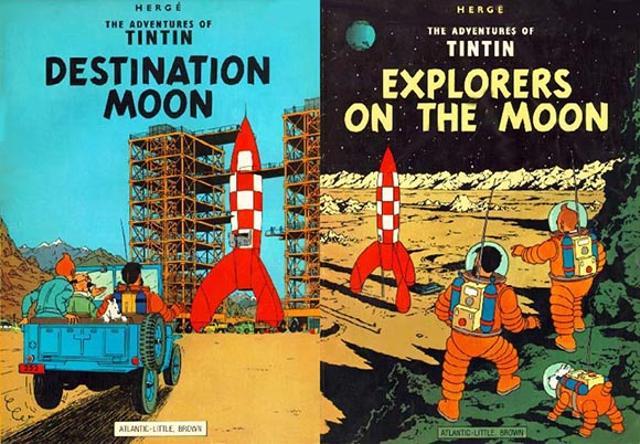
Professor Calculus is working with the government of Syldavia on a top-secret project to send a manned spacecraft, with a nuclear-powered rocket engine, to the moon. Tintin and the gang end up on an adventure to outer space, as they try to protect the technology from nefarious foreign powers.
A Fall of Moondust, 1961
by Arthur C Clarke
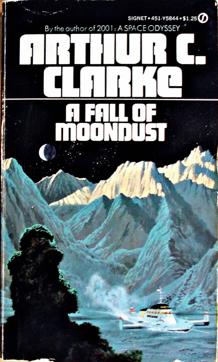
Man hadn’t set foot on the moon yet, but Clarke had already colonised it with humans. And they’re inviting terrestrial tourists to visit, take a look around, go on a cruise; the Sea of Thirst offered a vast expanse of moondust so fine that it flows like water. A moonquake occurs on one such voyage, causing the lunar cruise-liner to sink. A rescue mission must be hatched, but no one knows exactly where the ship is, in the unfriendly, unpredictable and unexplored alien sea.
The Moon Is a Harsh Mistress, 1966
by Robert A Heinlein
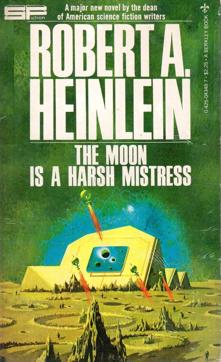
The year is 2075 and the moon is where humans send their criminals, to work on the earth’s hydroponic wheat supply. But water is running out there and revolt is imminent. Leading the rebelling convicts is a techie, an activist, a professor – and a self-aware central supercomputer with a sense of humour.
ALSO READ
The Great Moon Hoax, 1835
The Sun newspaper
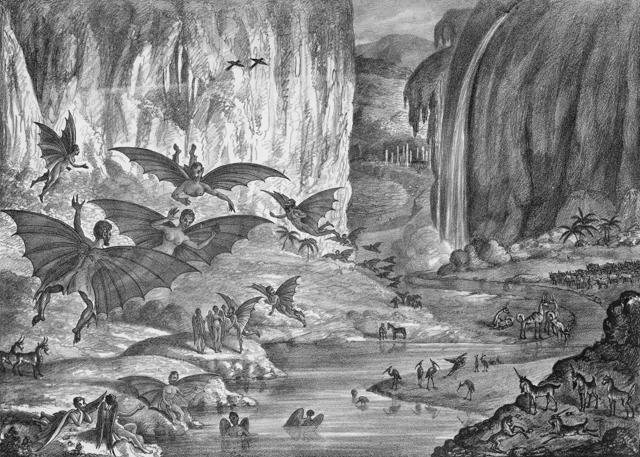
Aliens had been found on the moon, spied through a 14,000-pound telescope with a magnifying power of 42,000. Over seven days, a series of articles in the daily newspaper, the New York Sun, described the men and women, with web-like wings, that inhabited rolling lunar fields. The articles were falsely attributed to Sir John Herschel, a real astronomer of the time. They claimed beavers walked upright there, amid herds of bison, expansive forests and blue unicorns. The people believed it and the newspaper never announced that it was a hoax.






